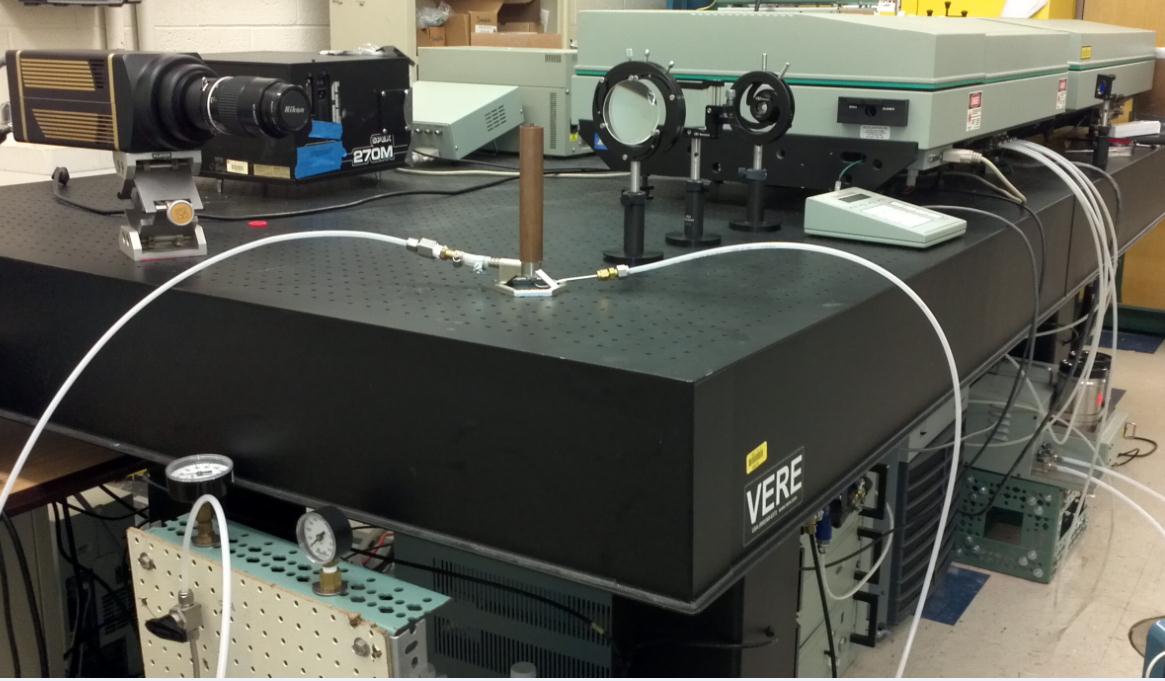Planar laser-induced fluorescence (PLIF) is an optical imaging process for obtaining spatially and temporally resolved two-dimensional chemical species such as Poly-aromatic Hydrocarbons (PAH) and OH. In this technique the species examined are excited by laser. The excitation wavelength is chosen such that the targeted species have the largest cross section. The excited species then after some time, de-excite and emit light at a longer wavelength. This process of de-excitation is called fluorescence.
The experimental method of detection is similar to the LII. In addition to a Nd:YAG laser, a Dye laser is used. Nd:YAG laser is used to pump the Dye laser. The laser beam from the Dye laser is frequency doubled using a frequency doubler. This beam is converted into a laser sheet and passed through the zone of interest in a flame to excite the targeted species. The fluorescent light is detected using a highly sensitive ICCD camera.

LII and PLIF Experimental Setup